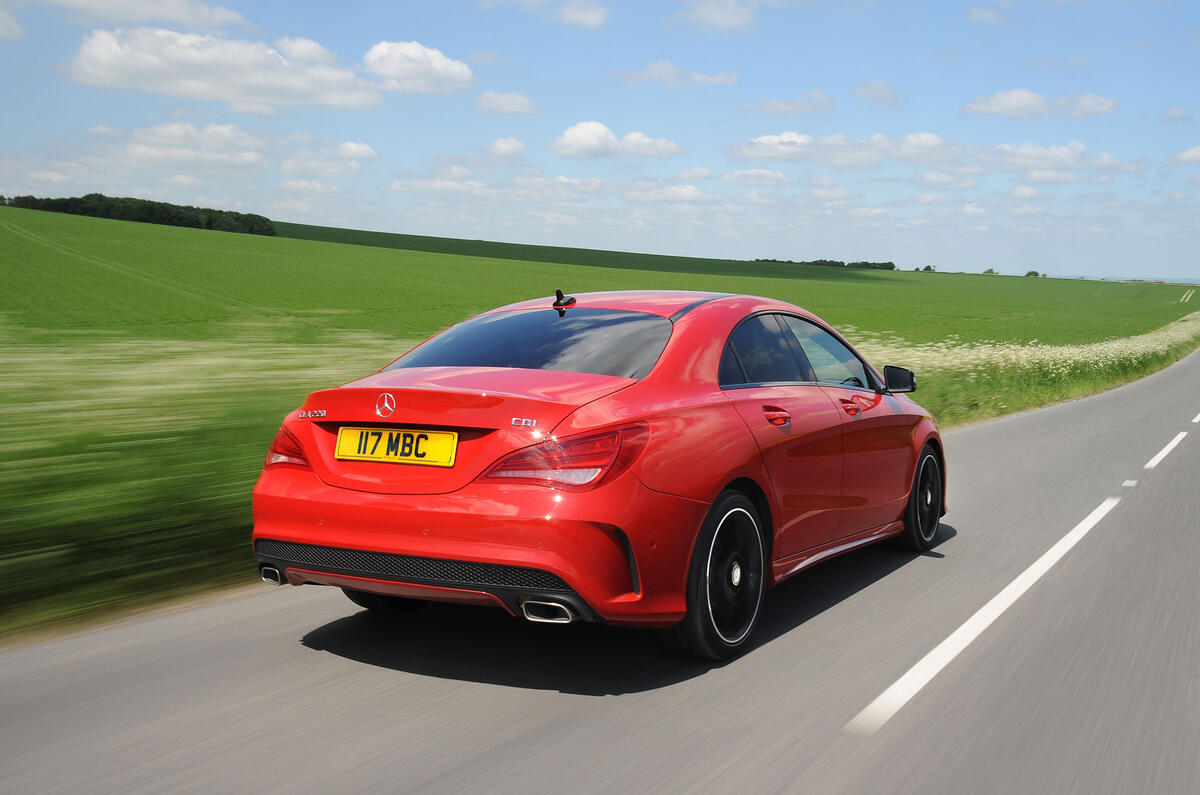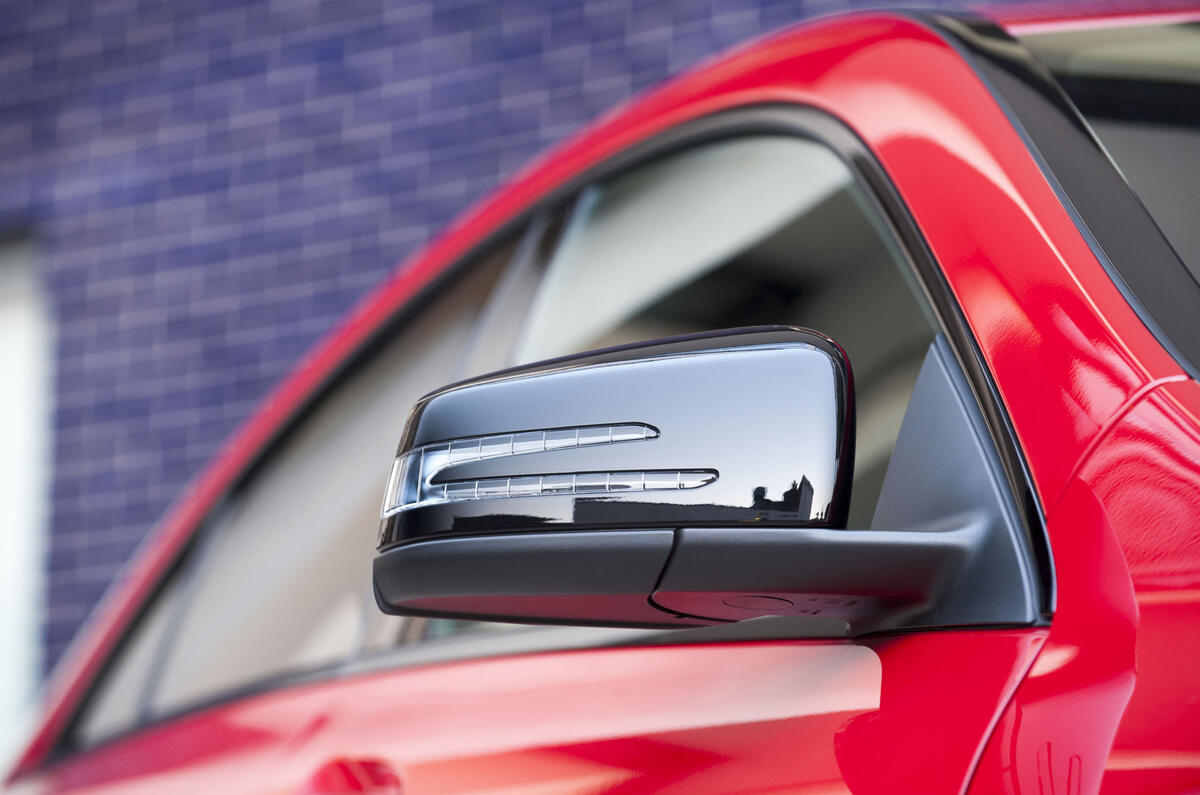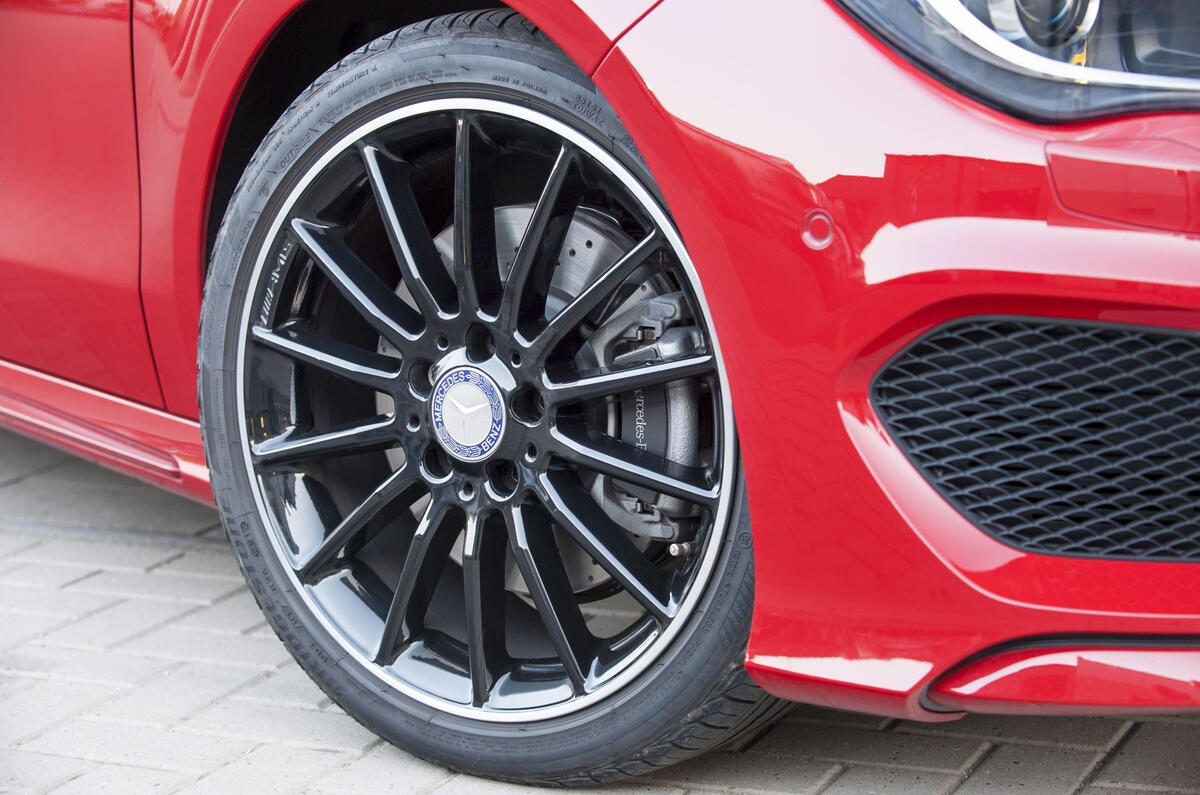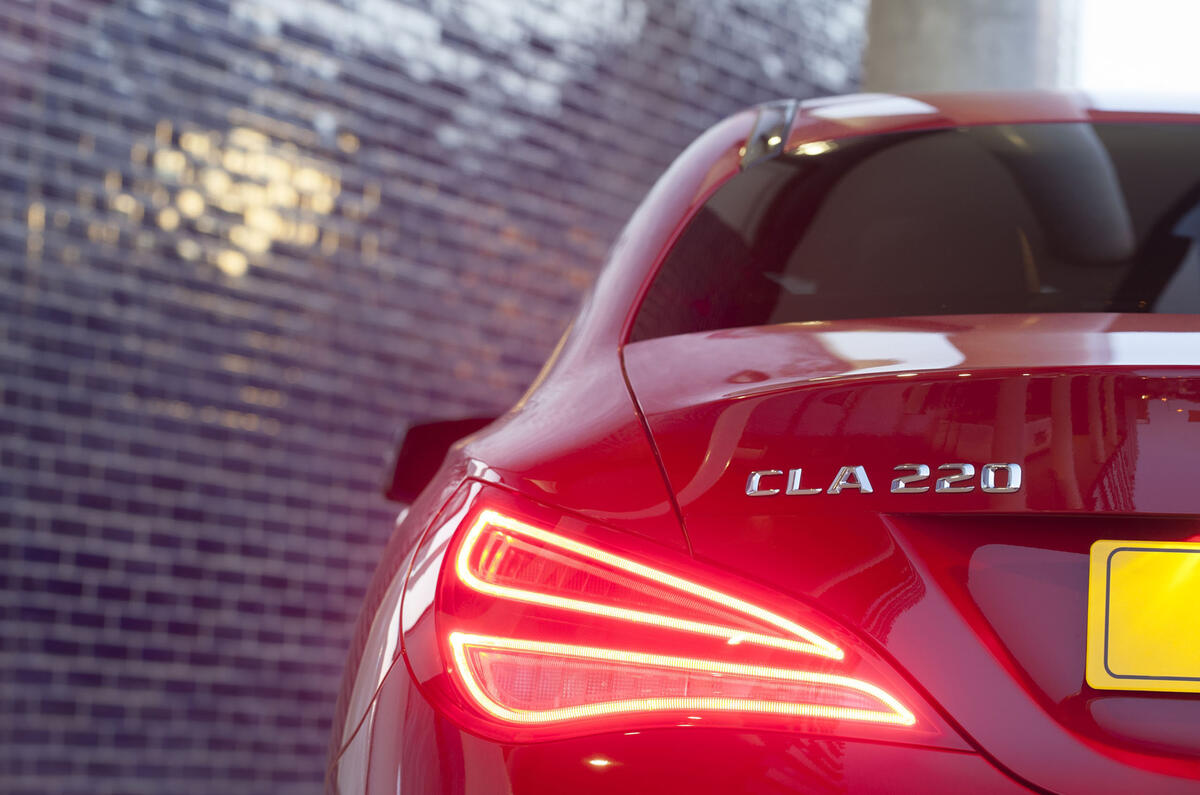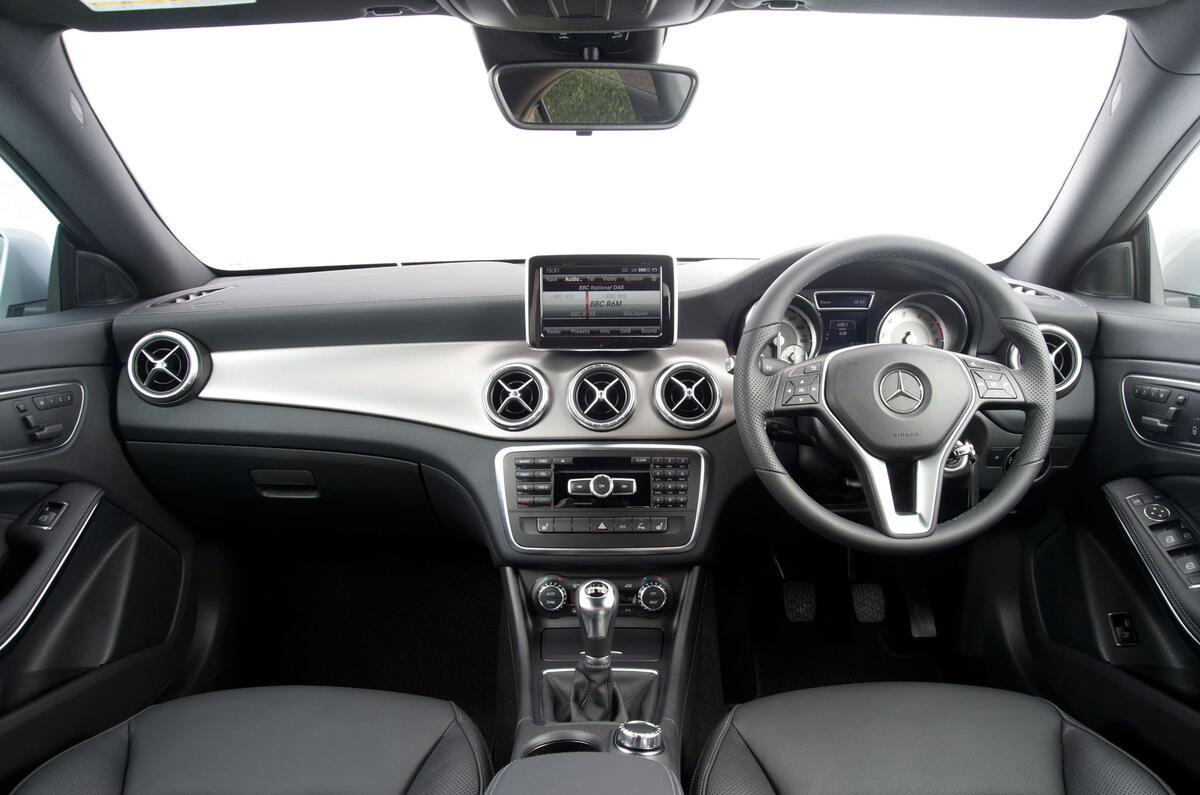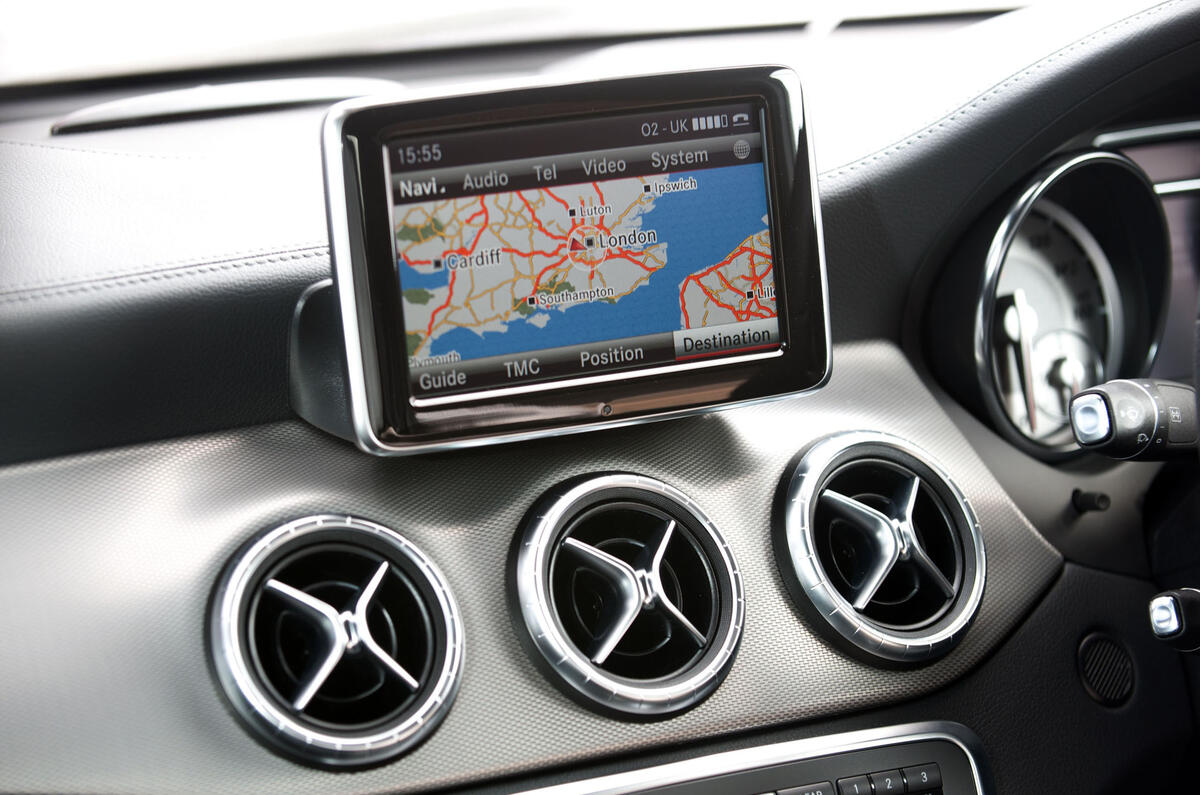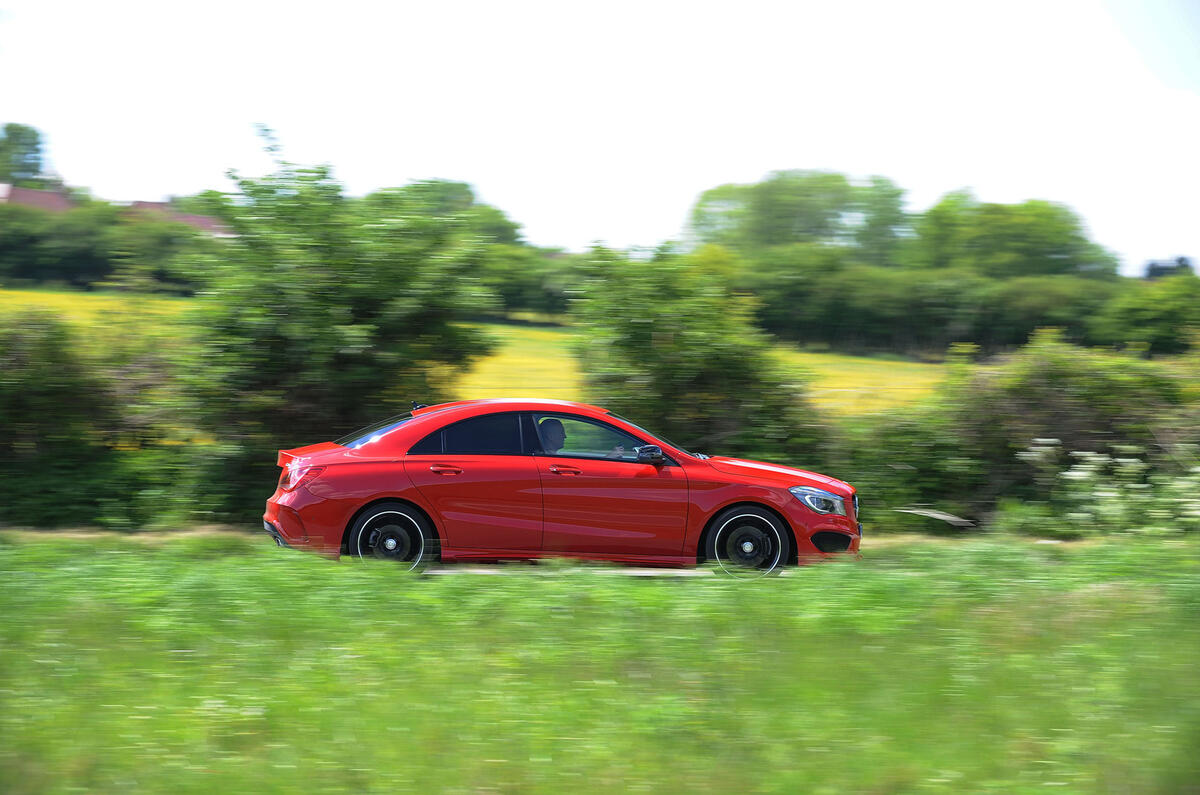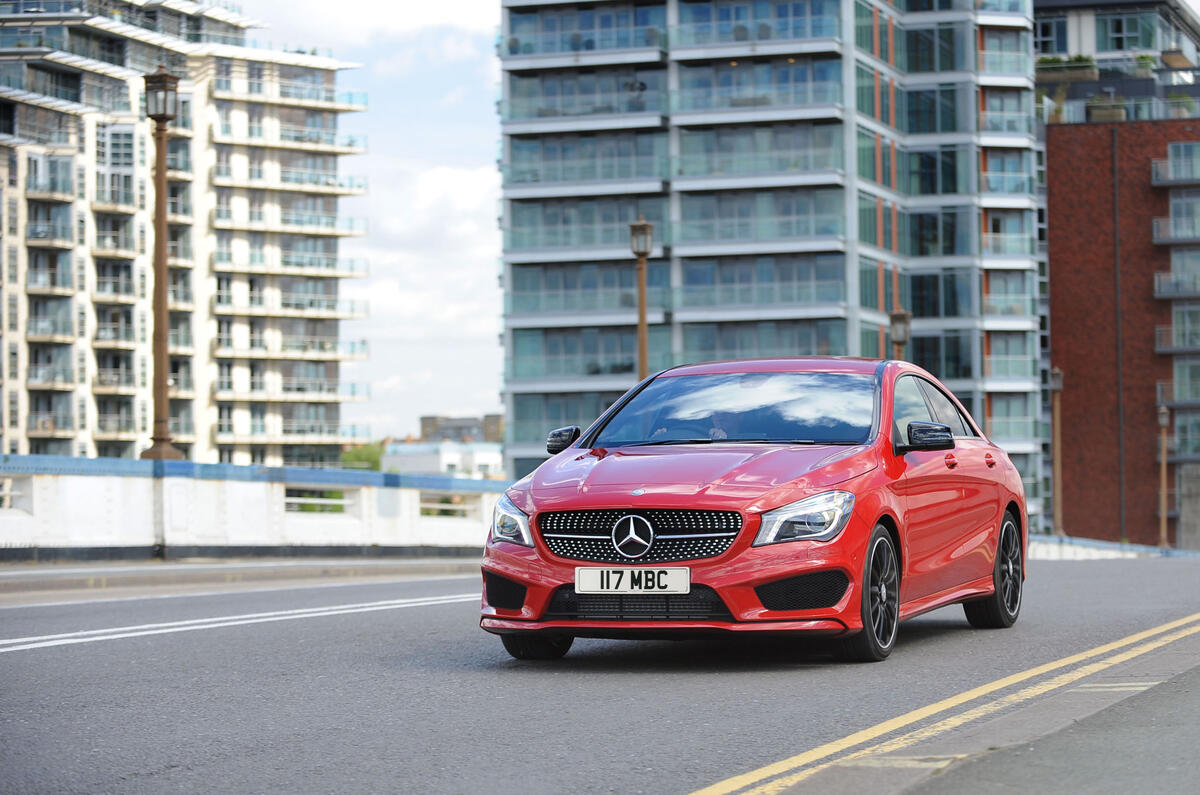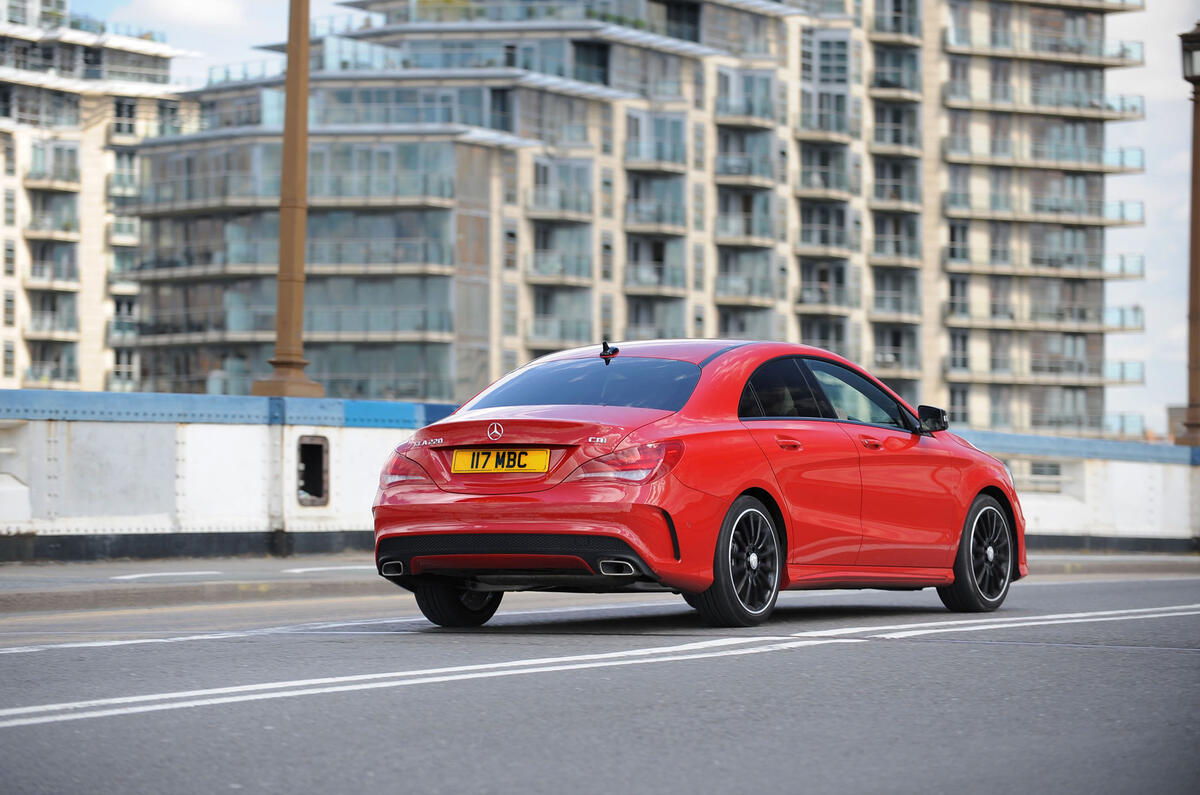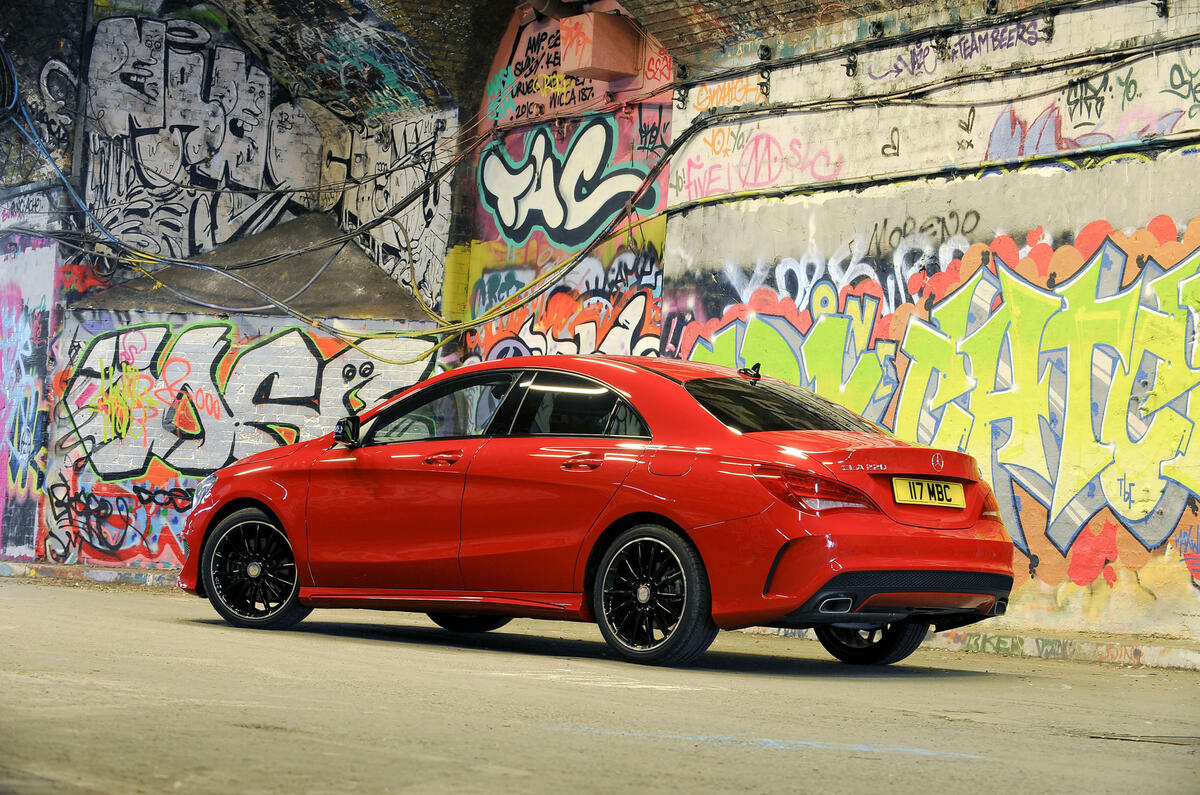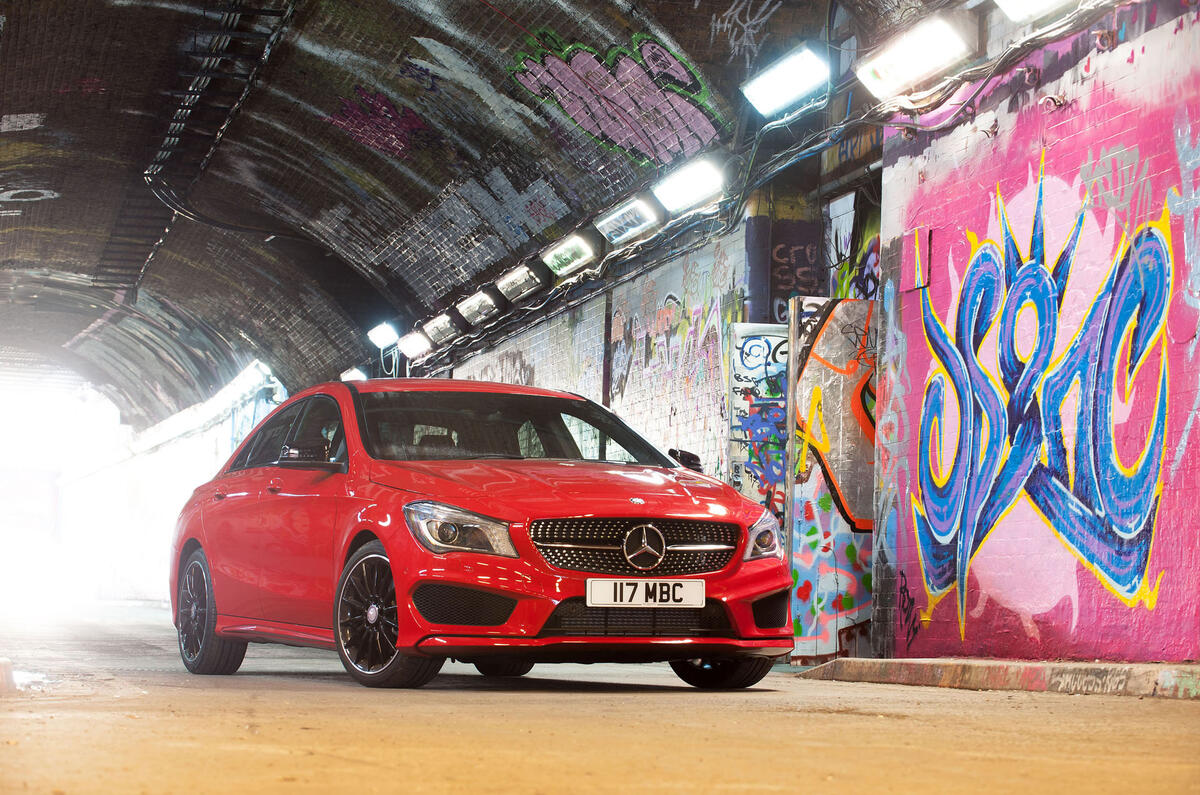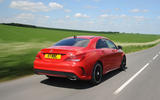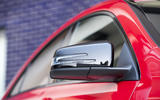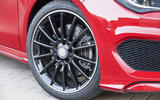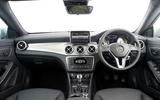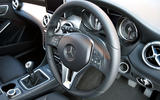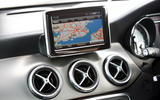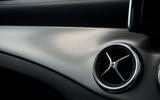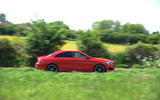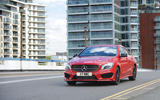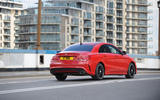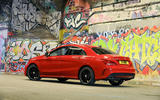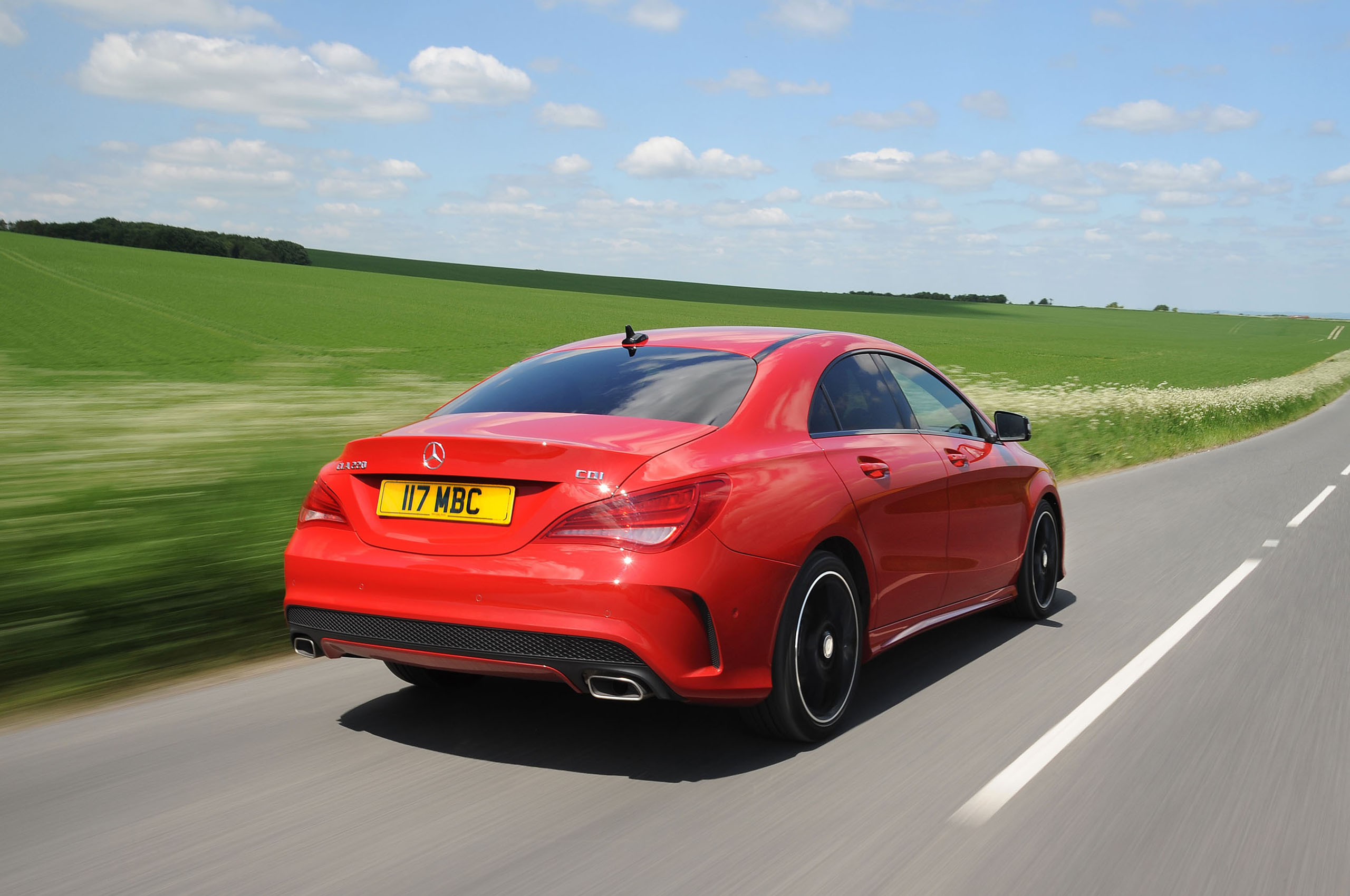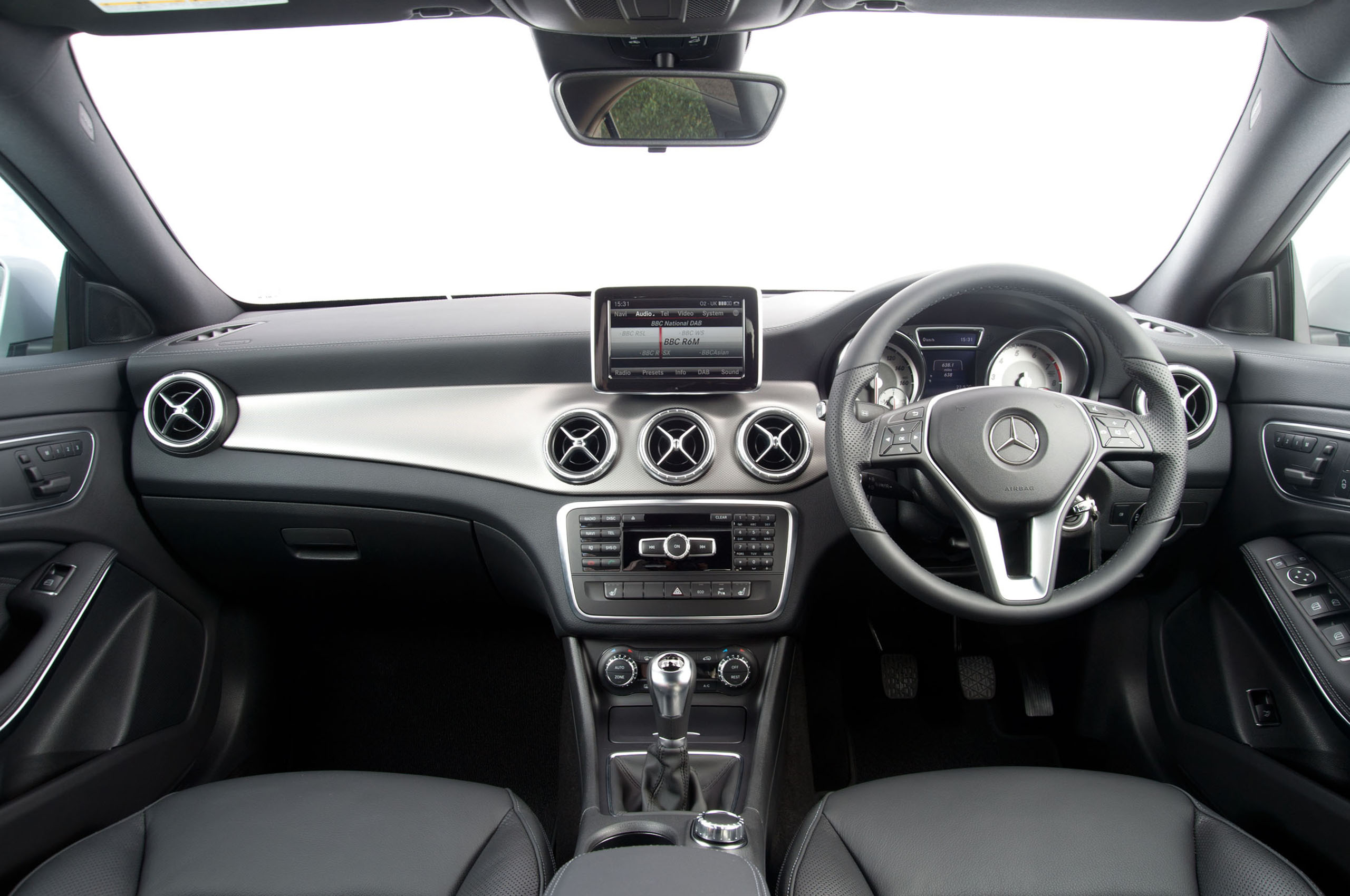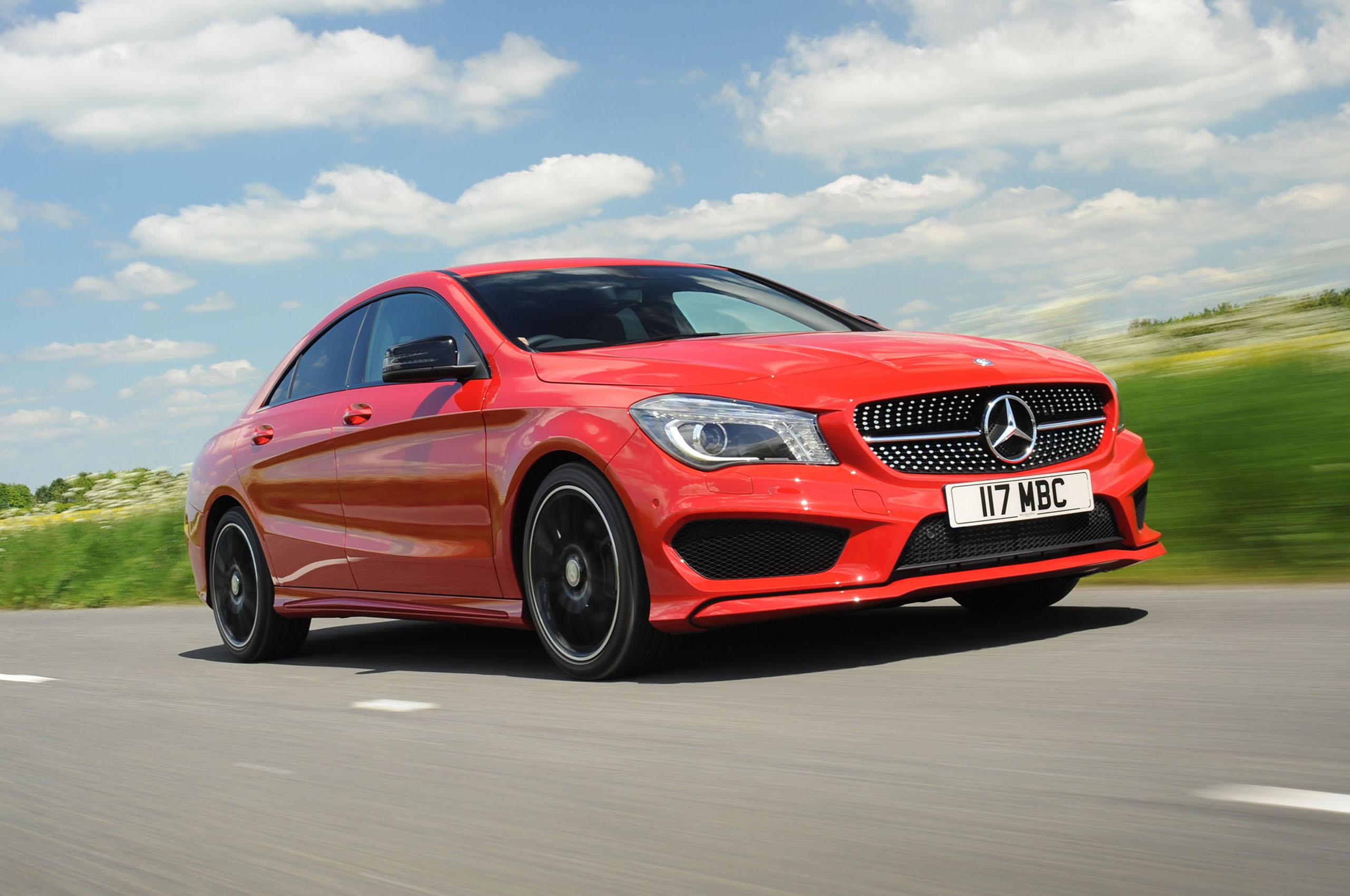The first price to be paid for the CLA’s style-centred design is evident as soon as you open the door.
Even if you’re not used to stretching out in one of the more spacious saloons available at this price point, you’ll be aware of a certain tightness of package, along with a need to lever yourself into the Mercedes' driver’s seat more carefully than you would into a typical compact exec.
Once you’re in, the rooflining is quite close to your scalp even with the driver’s seat cranked down as low as it will go, and both shoulder and kneeroom are relatively scant. There’s enough space up front for a 6ft 4in driver, but with little left over.
In the back, entry is made tricky by the plunging roofline, while headroom is insufficient for anyone even remotely tall and legroom is limited – especially so with tall passengers occupying the front seats. In truth, it’s a back row for teenagers, not fully grown adults.
Factor in the boot of only an average-size notchback and you’d say an Mercedes-Benz A-Class is probably a more practical car. A Mercedes-Benz B-Class definitely is, as is a typical compact executive saloon.
There’s reason to assume that a CLA buyer could live with that kind of cabin, though, attracted as they may be by the way the car looks over what it might offer in terms of practicality. Otherwise, they'd buy a Mercedes-Benz C-Class or even the C-Class Coupé. They'd be more likely to be disappointed by run-of-the-mill cabin design and average material richness. They’ll find neither here, but nor will he find a cabin of outstanding style or imagination.
It’s a cabin well up to Mercedes’ high standards and is littered liberally with expensive touches. But it’s also an entirely conventional interior, and one that’s heavy on the switchgear. A world away, then, from the high-design minimalism of the Audi A3’s cockpit.
Equipment levels across the three trims, Sport, AMG Line and, confusingly, 250 AMG, live up to the CLA's premium billing. That comprehensive roll-call of kit extends to safety equipment. As with the A-Class, Collision Prevention Assist radar-based braking system is standard.
The entry-level Sport trim comes equipped with 18in alloy wheels, comfort suspension, auto wipers, parking sensors and cruise control, while inside includes an infotainment system complete with a 7.0in screen, Bluetooth, USB port and smartphone integration, sports seats covered in Artico leather upholstery and dual-zone climate console. AMG Line models get 18in alloys, LED headlights, lowered suspension, and part leather/part-microfibre upholstery, while the 250 AMG models receive speed-sensitive steering, sports suspension, a modified stability system, Garmin sat nav and heated front seats.
Those lucky enough to opt for the CLA 45 will find that the AMG comes with an aggressive bodykit, interior styling and decals, a sports exhaust, a seven-speed auto sports transmission complete with paddle shifters, and AMG performance seats.
Functional, substantial and materially pleasing it may be, but it’s just a little too ordinary to communicate much in the way of star quality.



